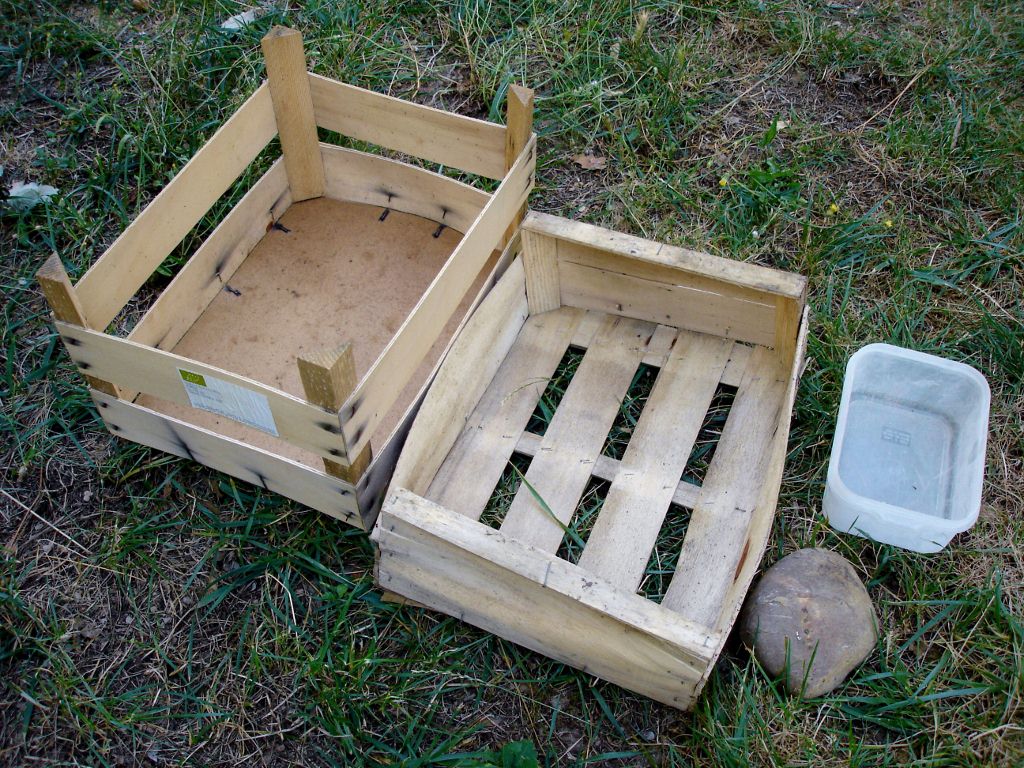Right now, it’s summer and therefore the peak season for fruits and vegetables.
That also means a lot of peelings that go into the garbage.
For those of you who don’t yet produce their own “home-made” compost, this is the opportunity to start!
I suggest you try a simple way, without it costing you a penny.
I won’t go into the benefits of home-made compost, but I will say this:
Homemade compost is more alive than commercial compost, which has been sterilized.
The soil in my vegetable garden is lumpier and less sticky since I put in homemade compost.
Contents
Two crates and a container

Collect two wooden crates from the market or your local produce store. Usually they are stacked in the back of the store waiting to be thrown out.
At least one of the two crates should have a bottom with spaces between the wooden strips.
These crates will serve as a compost bin.
Find a plastic box or container that will stay in the kitchen.
You will put all the peelings of the day in it.
Installing the crates
Choose a spot in a shady corner of the garden.
Place the crate on the ground with an airy bottom. This will allow soil organisms to come up to ensure the decomposition of your peelings.
Place the second crate like a lid on the first.
To keep the lid in place, weight it down with a heavy object (such as a large stone).
What kitchen waste can you compost?
For this little composting experiment you are about to do, put in only vegetable waste.
These are all fruit and vegetable peelings, and at the very least some leftover cooked vegetables.
Since the crates are not closed like a real composter, you should not put any meat waste in them.
This could attract cats.
Every night, you can throw the contents of your container into the bin in the garden.
An important tip for good composting
In order for the compost to be made faster and be well balanced, it must be composed of :
half of “green” matter: your kitchen waste,
for half of “brown” matter: dead leaves, straw, dry grass.
So every time you throw away kitchen waste, remember to add a few handfuls of “brown” vegetable matter at the same time.
It’s even better if you mix everything in the bin with a stick.
This way, the little beasts that live in the forming compost will colonize the new waste more quickly.
This is just the beginning
If you are not used to composting, it will take a little effort every day to sort the peelings and take them to the garden.
I ask you to try it for 30 days, that’s how long it takes to establish a new habit.
If at the end of the 30 days, this habit suits you well, then you will be ready to invest in a real composter.
You can then move up a gear and compost more food scraps, pet litter, lawn clippings, weeds you’ve pulled, etc…
It would be great if everyone who is going to start a small compost pile with this system would leave a comment below.
I’m sure it will motivate all those who don’t dare to start composting at home.

